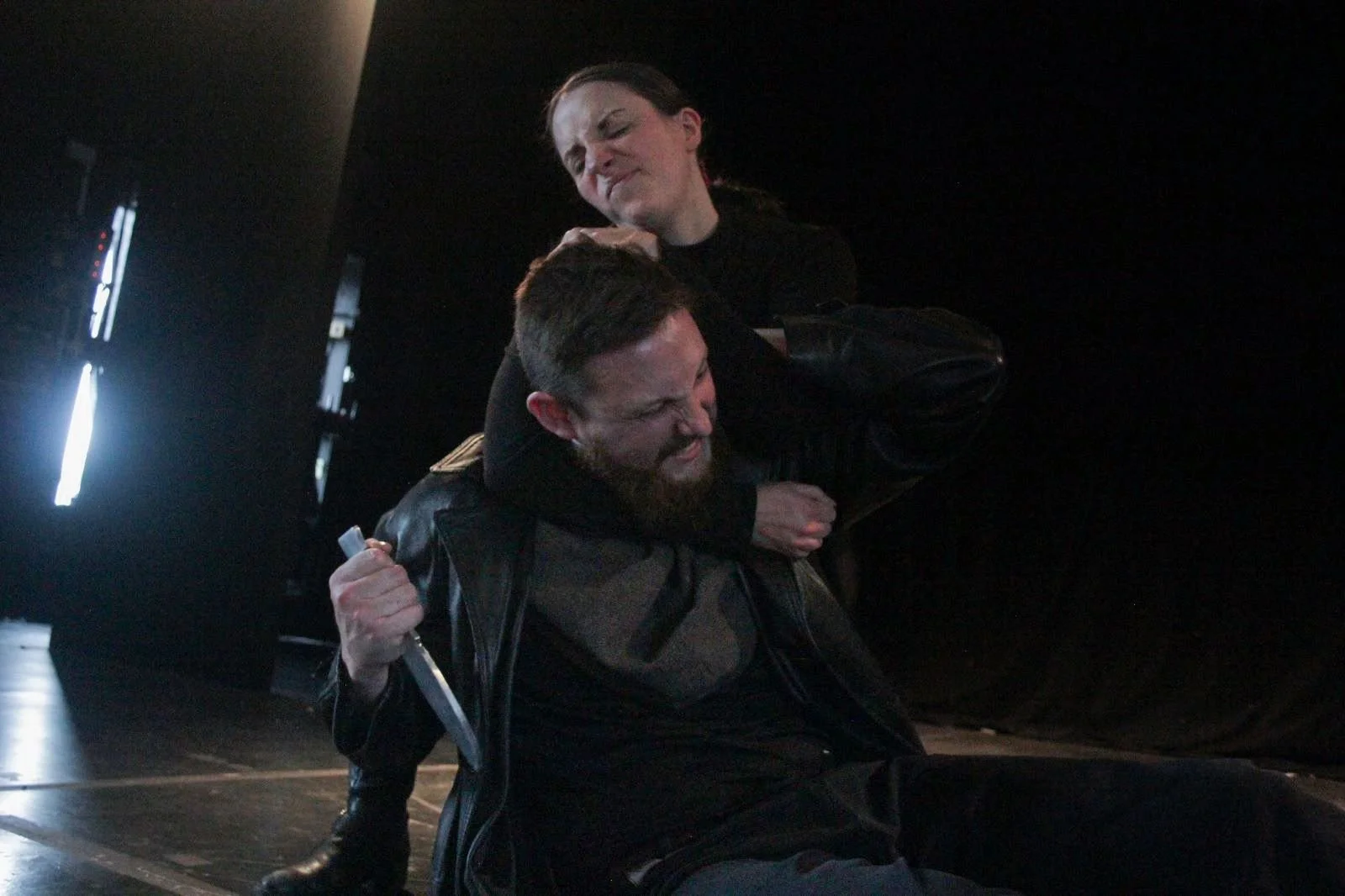Stage Combat is about using the space available to you to tell a story to various types/shapes/sizes of audience. Every magic trick of the fight must work for every seat in the house, and the story should be just as clear for the back row as for the front.
A key difference is that, in live performance, you need to do the fight all the way through in one go, every performance for the whole run. This means that the choreography must be much more tailored to the ability of the performers, and the available rehearsal time. A safely performed, clear story with consistent character is preferred to the actors breaking character to concentrate on ‘that really hard bit’! Of course, the ability of the actor to perform is improved through effective coaching strategy, well structured rehearsal, and clear communication between director, fight director and performers. I use all of the tricks that I have learned from my years as a fencing coach and martial arts teacher to get the best performance from your actors in a timely fashion!
Finally, there’s nothing quite like the feel of the theatre. The overview of the action has the audience find little meaning in micro-tactile movements, but does follow the tactics and story that comes from shapes, rhythms and energies of bodies filling the stage, in the same way that music or dance fills a room.

